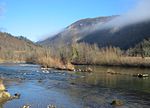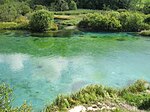The Upper Carniola Statistical Region (Slovene: Gorenjska statistična regija) is a statistical region in northwest Slovenia. It is a region with high mountains, including Mount Triglav, and is almost entirely Alpine. A large part of this statistical region is protected as a national park. The relief and climate are good bases for tourism. In 2013, the region recorded almost 19% of tourist nights in Slovenia, of which 78% were by foreign tourists. The region ranked second in Slovenia in number of tourist beds per 1,000 population, even though it had just over half as many beds as the Coastal–Karst Statistical Region. In 2013, the registered unemployment rate here was the lowest in Slovenia, 3 percentage points lower than the national average and more than 8 percentage points lower than in the Mura Statistical Region, where the registered unemployment rate was the highest. Although agriculture in this region is not among the most important activities, the farms are among the largest in the country both in terms of average utilised agricultural area per farm and in terms of the number of livestock per farm.
At the beginning of 2013, this region had a relatively favourable educational structure. The share of people without schooling, that had not completed primary school, or with only primary school was below the national average, and the share of people with tertiary education was above the national average. In this region, municipal waste is carefully separated; in 2013 more than half of municipal waste was collected separately.












